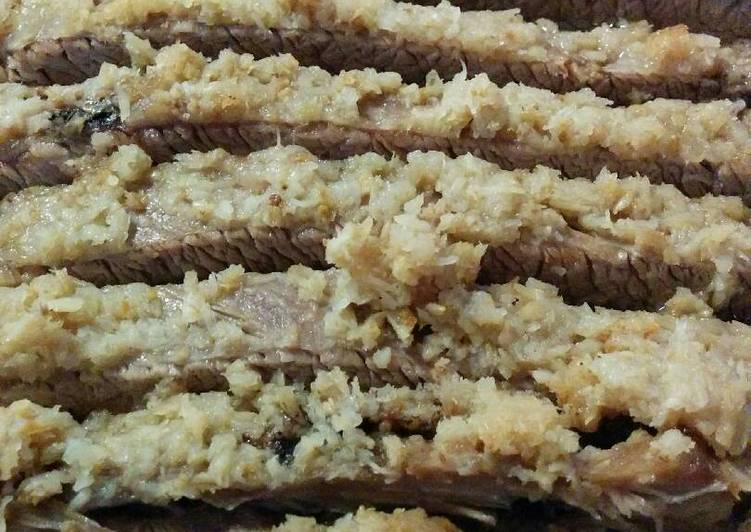Out of Egypt beef brisket. Out of Egypt beef brisket I previously followed a similar recipe that called for horseradish and cranberry sauce, but now I am trying to cut down on sugars so I shipped the cranberry sauce. The convention of cooking it low and slow often results in dried-out meat that never reaches the proper internal temperature. Instead of waiting all day and risking such disappointment, we dial up the temperature slightly and bake it in about half the time to ensure it's both tender and moist.
 Make extra, so you can be sure to have leftovers too!
The beef belly is better known by its industry term - navel.
The navel cut is what the brisket joins into, just a little further down the body.
You can have Out of Egypt beef brisket using 2 ingredients and 11 steps. Here is how you cook that.
Make extra, so you can be sure to have leftovers too!
The beef belly is better known by its industry term - navel.
The navel cut is what the brisket joins into, just a little further down the body.
You can have Out of Egypt beef brisket using 2 ingredients and 11 steps. Here is how you cook that.
Ingredients of Out of Egypt beef brisket
- Prepare 4 lb of beef brisket.
- You need 6 oz of prepared horse radish (in a jar).
Just like pork, it's rippled with seams of fat that when cooked correctly transform to golden rendered ribbons. Evenly smear tomato paste over top of brisket. Place carrots and celery all around the edges of brisket. Whisk the flour in the beef broth to dissolve.
Out of Egypt beef brisket instructions
- Spray casserole dish with cooking spray.
- Spread 1/2 bottle of horseradish in dish.
- Trim fat from brisket.
- Cover brisket with remaining horseradish.
- Tightly cover with aluminum foil.
- Bake at 300°F for 3 1/2 hours.
- Slice brisket across grain.
- Return brisket to baking dish.
- Cover with foil.
- Optionally refrigerate until ready to use.
- Cook in 225°F oven for 2 hours.
Cover pot tightly with heavy lid. Place the brisket, fat cap up, in the middle of aluminum foil prepared in the roasting pan. Bring the aluminum foil together and close it, covering the brisket loosely, leaving a little space between the brisket and the foil. Cut the whole beef brisket off the end at the size you want it. (This is fast and loose, folks. If you don't want a whole brisket, cut more steaks, stew meat or kebab chunks, it's up to you. this post is a guide, not a definitive instruction manual.) Then part out the large cuts for steaks and stew meat.